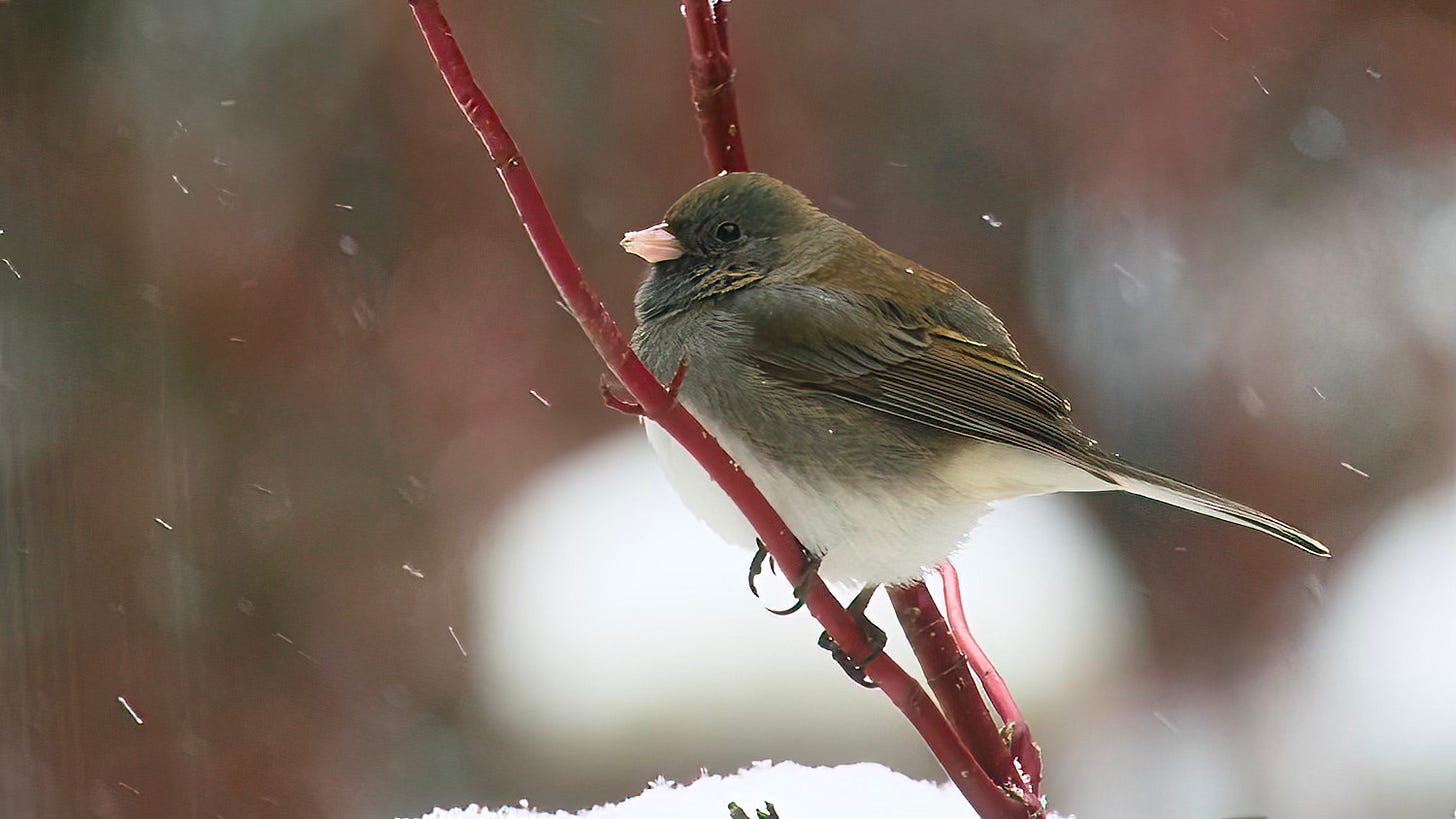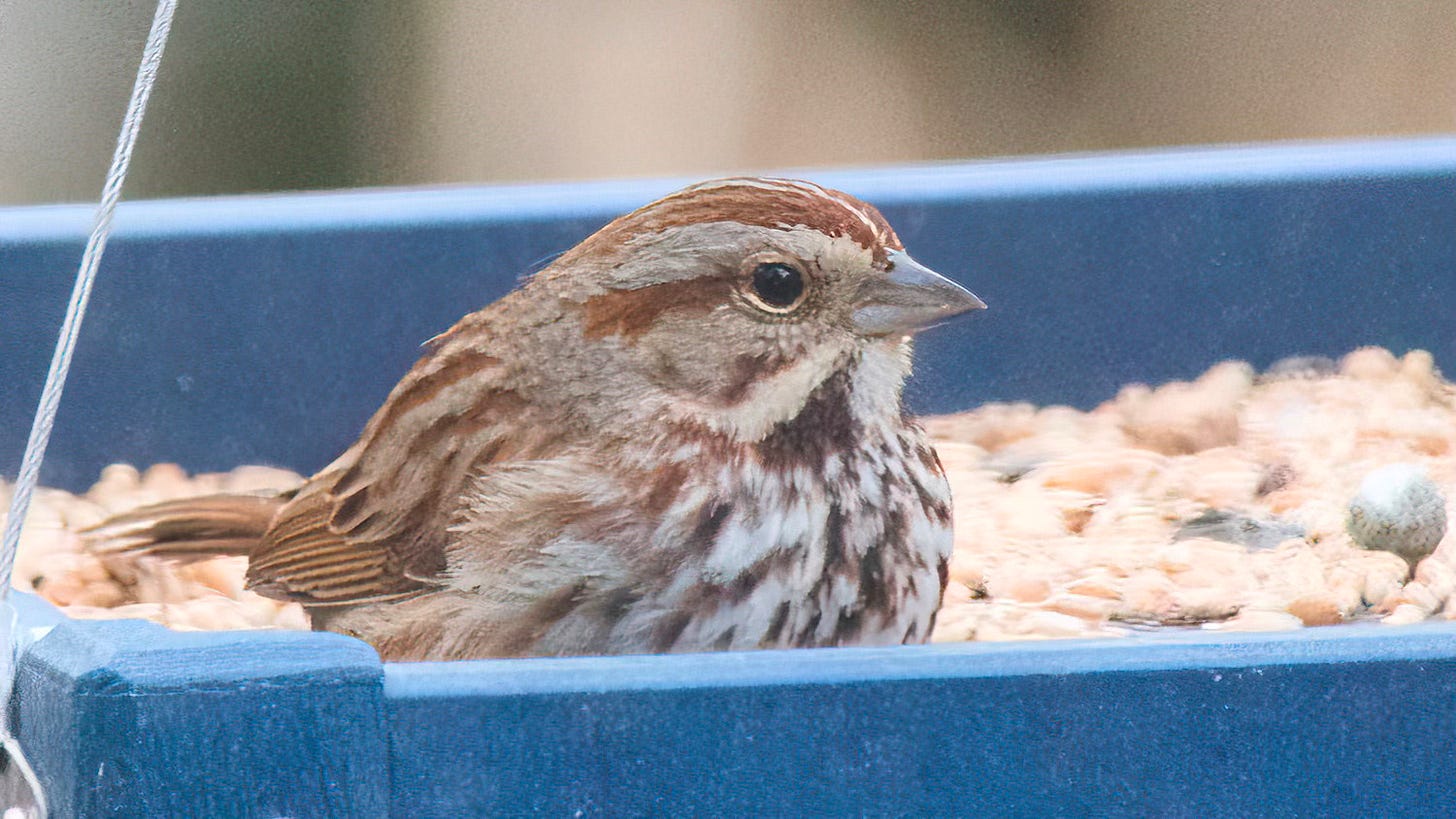We have just had what I do hope is the final fall of snow and freezing nights are still with us, while there was a recent day when I was turning round in the middle of the garden looking at brown sticks and rocks and a few snowdrops and realising that the sun had some warmth in it while the Chickadees were singing their happy songs from the red dogwood twigs that they like to sit in while waiting for me to move further away from “their” feeders … and I thought “this is almost like spring”. There will be a day not too far away when I do that and notice that “there is green stuff growing all around me”.

The Ancient Beach
“As we work to know the life that surrounds us, we stand in a lineage of naturalists — past, present, and even future. We join the "cloud of witnesses" who refuse to let the more-than-human world pass unnoticed.”
― Lyanda Lynn Haupt,
When I walk round Baie-D’Urfé, down the gentle slope of the road from our house to the lakeshore (the St-Lawrence River here is so wide it is given the status of ‘lake’) and wander along to the parks that allow access to the water between the walled off Macmansions, it is hard to think that this very solid land was once deep under water. We all know the stories of the indigenous people’s who travelled along the network of rivers from community to hunting ground and beyond. Then there were the Voyageurs who trapped the beavers in the seemingly boundless forests to send furs back to Europe in earlier centuries. Everything seems unchanged - in fact from the main waterside park I can look across at an uninhabited and tree covered island that, it is said, looks just the same today as it would have been seen by the first European settlers when they arrived on this continent from France over 400 years ago.
But it was not always as we know it now. Only 12 000 years ago, almost yesterday in geological terms, the last of the great ice-age glaciers retreated leaving behind a till sheet comprising blocks, pebbles, sand, and mud. The. Great Champlain Sea was born. What is now the city of Montreal was that recently on the floor of the ocean, before which it was under 2km depth of ice - that’s not a typo, the ice really was that thick.
Some 9500 years ago, as the immense weight of ice was no longer felt, the land started to rise slowly out of the sea which became a lake, that in turn gradually shrank to form channels occupied by large peat bogs. Lake Saint-François, the wide part of the river adjacent to Montreal is a last remnant of this period.
Visitors to the arboretum just outside our town can see proof of this. Walking along the main trail in the forest going westwards from the visitor centre you will see on your right a steep slope now covered by trees, mostly maple, oak and hickory. At the bottom the land levels out. That steep slope was once the bank of a river valley that a few thousand years ago divided the Montreal island into several smaller islets. If you walk down the slope and through the forest to the north, in about ten minutes you will come to a log cabin (around 50 years old) that sits on top of another such river bank. At the bottom of that bank, during 2017, a team of arboretum volunteers created and planted “The Copse”. This is a small collection of native trees and shrubs selected for their ability to bear fruit through the summer, fall and into the winter - fruits that support and feed wildlife, especially birds. In preparing the site and planting the trees the volunteers were surprised to discover that little more than 18 inches below the rich silt and loam they were planting in was a deep layer of almost pure sand. I enjoy imagining the one-time indigenous peoples of Montreal sunning themselves on the sandy beach of this remnant lake or river, perhaps fishing or cracking mussel shells or even simply taking it easy with their children after a hard day gathering food, trapping animals for meat and skins and tending to their encampments. Permanent settled human communities in Montreal area can only be dated back to the thirteen hundreds but archaeologists have found evidence of wandering groups along the banks of the shrinking sea going back some 4000 years.
All of which is to say that the Montreal area has always been rich and well blessed with forest resources and food for those skilled in exploiting them. Its recent emergence as a more densely populated city suburb is quite a new development. People who grew up here in the sixties and seventies have spoken to me of wandering through open fields in the evenings after school and work. Consequently, the natural variety of wild plants and birds, mammals and insects has only relatively recently had to adapt their needs to our presence and more species than anyone suspects hang on in our fields, parks, roadside verges and gardens. We just have to pay attention.
We do not need to head to faraway places to encounter "nature." Rather, even in the suburbs and cities where we live we are surrounded by wild life and through observing them we can enhance our appreciation of the world's natural order.
Although by the human calendar, our years start on January, I think that I prefer to begin at the start of the real natural year with the imminent arrival of spring. Prepare yourself for a surprise though. Montreal has been a major seaport on this continent for over 400 years. All those ships moving back and forth have resulted in a surprising proportion of our so-called “native” plants actually being European and Asian immigrants that, like our ancestors, rather liked what they found and decided to put down roots and make a home here. What might we see this week - the pickings are still slim, but there are good things to enjoy in the suburban natural world.
Song Sparrows
This fellow, the first returning Song Sparrow of 2024, dropped by our garden a few days ago for a breakfast snack. One of the first migrating birds to return and always welcome to our neighbourhood. You can’t help knowing they are around, especially once they start their eponymous song … over, and over, and over again. To my mind it is not as melodious as its Latin name, Melospiza melodia, might suggest. Typically ground feeding birds so they will take food from a platform such as the one in my photo but less frequently for tube and other similar feeders.
Eastern Comma Butterfly
Some, though not many, butterflies overwinter as adults and can be seen in late March on warm sunny days, often sitting on warm rocks soaking up some rays. Last fall, adults fattened up by feeding voraciously, often on rotting fruit and sap. They then find a bit of bark or similar to shelter under and enter a metabolic diapause phase. During summer, Newly emerged adults can live up to five months - and, males are renowned for their quite aggressive territorial behaviour, chasing not only competing males but also other insect species and even birds. Hard to think of an aggressive butterfly, but here’s your man.
Knowing the names of things is a superpower. I use an app called Seek. I talk about it a lot in my book—it has been such a useful companion. It’s like having someone clever … in my pocket to help me learn. Once you know the name of a tree, you start to see it more often and you start to care about it and connect with it more. It’s very important, I think, to learn names.
Alastair Humphreys
Knowing the names of things matters. A lot … I enjoyed this article from Substack (Link follows) and rather sadly identified with this extract:
Botany is, sadly, a dying science. With the rise in genetics, molecular biology, and biotechnology, the increasing prowess and availability of AI and plant ID apps, some would argue there’s no need for this tricky little process of dissecting and counting flower parts, measuring leaf stems, noting differences in twig hairs, returning and returning through its many phases of life, a process that takes a lot of patience, care, and, honestly, decades of devotion to master. I have a friend with a PhD in floristics who told me recently that, basically, there are no longer any well-paying jobs in her field of expertise ... To spend the time it takes to tease apart petals and count bud scales and decide whether something is 2 mm wide or 3 or if the hairs are more hirsute or tomentose, there’s a bond that forms that is a little less easy to undo.
Experiences on Identification
We’ve all been there … a fun article
Gardening for Butterflies …
Montreal published this short piece of information about creating an oasis in our gardens for monarch and other butterflies. All very simple … will you try to do it this summer?
https://espacepourlavie.ca/en/monarch-oasis-certification
Alien Invaders ...
This will be heresy in some quarters, but as a biologist I would say it makes quite a bit of sense:
… in our complex world, people yearn for simple rules of thumb to follow. “All non-native/invasive species are bad” is a simple maxim. “Most non-native species are fine but a few are bad, and only by following the emerging science can we know which is which” is, well, not that simple.












I give this article a ❤️. That's a no-brainer! Wonderful collection of your thoughts and links to related ones of others. Winter may not be over yet though it seems pretty wobbly at this point.
I relate so much! We had a full day of spring snow yesterday, and I was looking out my window at a sweet little junco perched in the flurry on maple branches tipped red with buds that are just about to burst…Spring should be here, ya know, any week now! 🤣
Such a thoughtful and information essay, thank you!